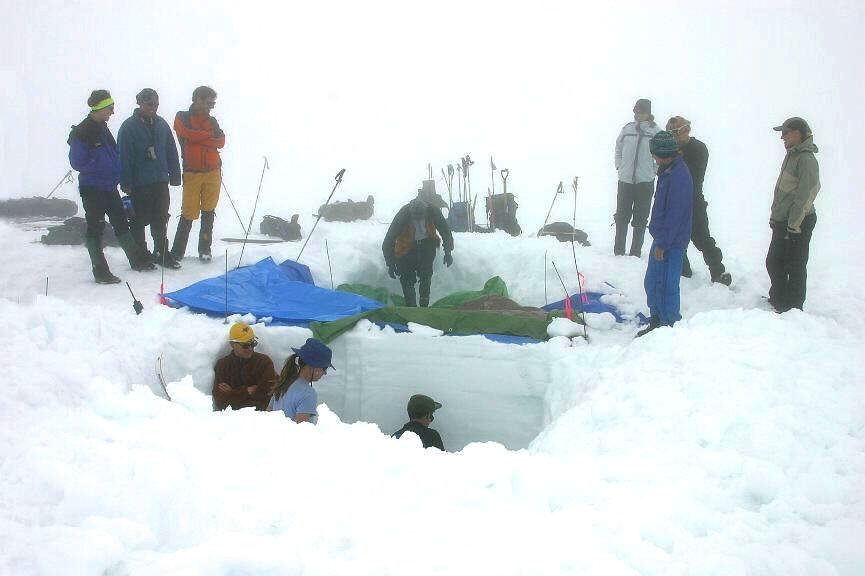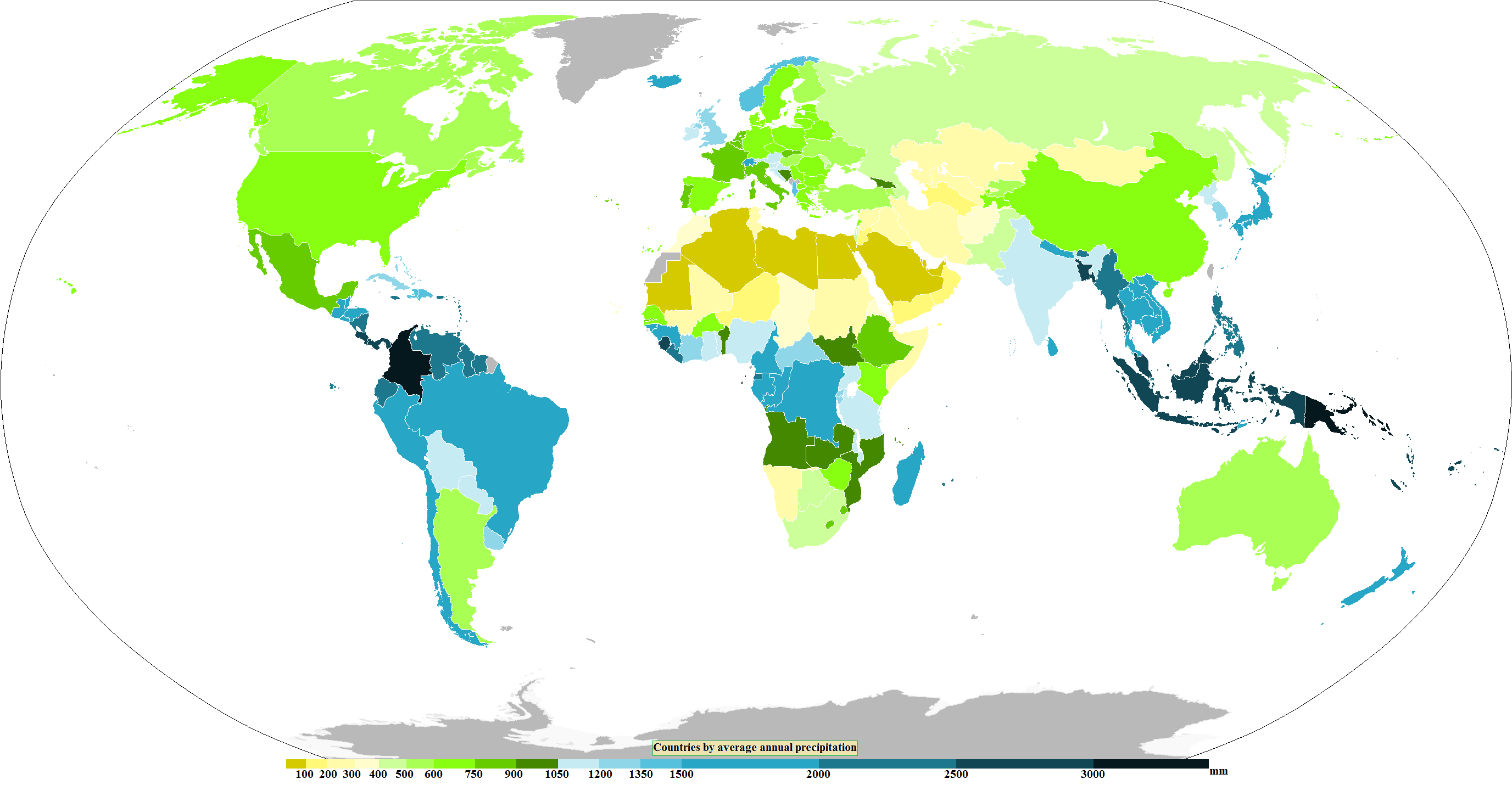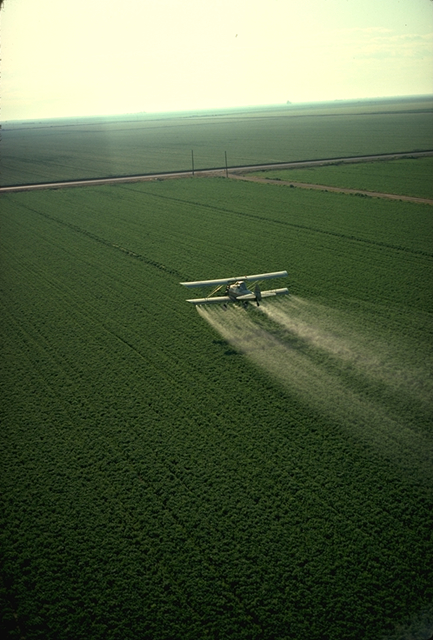|
Stormwater Runoff
Surface runoff (also known as overland flow or terrestrial runoff) is the unconfined flow of water over the ground surface, in contrast to '' channel runoff'' (or ''stream flow''). It occurs when excess rainwater, stormwater, meltwater, or other sources, can no longer sufficiently rapidly infiltrate in the soil. This can occur when the soil is saturated by water to its full capacity, and the rain arrives more quickly than the soil can absorb it. Surface runoff often occurs because impervious areas (such as roofs and pavement) do not allow water to soak into the ground. Furthermore, runoff can occur either through natural or human-made processes. Surface runoff is a major component of the water cycle. It is the primary agent of soil erosion by water. The land area producing runoff that drains to a common point is called a drainage basin. Runoff that occurs on the ground surface before reaching a channel can be a nonpoint source of pollution, as it can carry human-made cont ... [...More Info...] [...Related Items...] OR: [Wikipedia] [Google] [Baidu] |
Channel (geography)
In physical geography and hydrology, a channel is a landform on which a relatively narrow body of water is situated, such as a river, river delta or strait. While ''channel'' typically refers to a natural formation, the cognate term ''canal'' denotes a similar artificial structure. Channels are important for the functionality of ports and other bodies of water used for Navigability, navigability for shipping. Naturally, channels will change their depth and capacity due to erosion and Deposition (geology), deposition processes. Humans maintain navigable channels by dredging and other engineering processes. By extension, the term also applies to fluids other than water, e.g., lava channels. The term is also traditionally used to describe the Venusian channels, waterless surface features on Venus. Formation Channel initiation refers to the site on a mountain slope where water begins to flow between identifiable banks.Bierman, R. B, David R. Montgomery (2014). Key Concepts in Geom ... [...More Info...] [...Related Items...] OR: [Wikipedia] [Google] [Baidu] |
Snowpack
Snowpack is an accumulation of snow that compresses with time and melts seasonally, often at high elevation or high latitude. Snowpacks are an important water resource that feed streams and rivers as they melt, sometimes leading to flooding. Snowpacks provide water to down-slope communities for drinking and agriculture. High-latitude or high-elevation snowpacks contribute mass to glaciers in their accumulation zones, where annual snow deposition exceeds annual melting. Assessing the formation and stability of snowpacks is important in the study and prediction of avalanches. Scientists study the physical properties of snow under different conditions and their evolution, and more specifically snow metamorphism, snow hydrology (that is, the contribution of snow melt to catchment hydrology), the evolution of snow cover with climate change and its effect on the ice–albedo feedback and hydrology, both on the ground and by using remote sensing. Snow is also studied in a more global c ... [...More Info...] [...Related Items...] OR: [Wikipedia] [Google] [Baidu] |
Precipitation
In meteorology, precipitation is any product of the condensation of atmospheric water vapor that falls from clouds due to gravitational pull. The main forms of precipitation include drizzle, rain, rain and snow mixed ("sleet" in Commonwealth usage), snow, ice pellets, graupel and hail. Precipitation occurs when a portion of the atmosphere becomes saturated with water vapor (reaching 100% relative humidity), so that the water condenses and "precipitates" or falls. Thus, fog and mist are not precipitation; their water vapor does not condense sufficiently to precipitate, so fog and mist do not fall. (Such a non-precipitating combination is a colloid.) Two processes, possibly acting together, can lead to air becoming saturated with water vapor: cooling the air or adding water vapor to the air. Precipitation forms as smaller droplets coalesce via collision with other rain drops or ice crystals within a cloud. Short, intense periods of rain in scattered locations are calle ... [...More Info...] [...Related Items...] OR: [Wikipedia] [Google] [Baidu] |
Basements
A basement is any floor of a building that is not above the grade plane. Especially in residential buildings, it often is used as a utility space for a building, where such items as the furnace, water heater, breaker panel or fuse box, car park, and air-conditioning system are located; so also are amenities such as the electrical system and cable television distribution point. In cities with high property prices, such as London, basements are often fitted out to a high standard and used as living space. In British English, the word ''basement'' is usually used for underground floors of, for example, department stores. The word is usually used with buildings when the space below the ground floor is habitable and with (usually) its own access. The word ''cellar'' applies to the whole underground level or to any large underground room. A ''subcellar'' or ''subbasement'' is a level that lies below the basement or cellar. Purpose, geography, and history A basement can be used ... [...More Info...] [...Related Items...] OR: [Wikipedia] [Google] [Baidu] |
Urban Flooding
Urban flooding is the inundation of land or property in cities or other built environment, caused by rainfall or coastal storm surges overwhelming the capacity of drainage systems, such as storm sewers. Urban flooding can occur regardless of whether or not affected communities are located within designated floodplains or near any body of water. It is triggered for example by an overflow of rivers and lakes, flash flooding or snowmelt. During the flood, stormwater or water released from damaged Water supply network#Water distribution network, water mains may accumulate on property and in public rights-of-way. It can seep through building walls and floors, or backup into buildings through sewer pipes, cellars, toilets and sinks. There are several types of urban flooding, each with a different cause. City planners distinguish ''pluvial flooding'' (flooding caused by heavy rain), ''fluvial flooding'' (caused by a nearby river overflowing its banks), or ''coastal flooding'' (often caused ... [...More Info...] [...Related Items...] OR: [Wikipedia] [Google] [Baidu] |
Urban Runoff
Urban runoff is surface runoff of rainwater, landscape irrigation, and car washing created by urbanization. Impervious surfaces (roads, parking lots and sidewalks) are constructed during land development. During rain, storms, and other Precipitation (meteorology), precipitation events, these surfaces (built from materials such as Asphalt concrete, asphalt and concrete), along with rooftops, carry polluted stormwater to storm drains, instead of allowing the water to Infiltration (hydrology), percolate through soil. This causes lowering of the water table (because groundwater recharge is lessened) and flooding since the amount of water that remains on the surface is greater.Water Environment Federation Alexandria, VA; an American Society of Civil ... [...More Info...] [...Related Items...] OR: [Wikipedia] [Google] [Baidu] |
Eutrophication
Eutrophication is a general term describing a process in which nutrients accumulate in a body of water, resulting in an increased growth of organisms that may deplete the oxygen in the water; ie. the process of too many plants growing on the surface of a river, lake, etc., often because chemicals that are used to help crops grow have been carried there by rain. Eutrophication may occur naturally or as a result of human actions. Manmade, or cultural, eutrophication occurs when sewage, Industrial wastewater treatment, industrial wastewater, fertilizer runoff, and other nutrient sources are released into the environment. Such nutrient pollution usually causes algal blooms and bacterial growth, resulting in the depletion of dissolved oxygen in water and causing substantial environmental degradation. Many policies have been introduced to combat eutrophication, including the United Nations Development Program (UNDP)'s sustainability development goals. Approaches for prevention and re ... [...More Info...] [...Related Items...] OR: [Wikipedia] [Google] [Baidu] |
Nutrient Pollution
Nutrient pollution is a form of water pollution caused by too many Nutrient, nutrients entering the water. It is a primary cause of eutrophication of surface waters (lakes, rivers and Coast, coastal waters), in which excess nutrients, usually nitrogen or phosphorus, stimulate algae, algal growth. Sources of nutrient pollution include surface runoff from farms, waste from septic tanks and feedlots, and air pollution, emissions from burning fuels. Raw sewage, which is rich in nutrients, also contributes to the issue when dumped in water bodies. Excess Reactive nitrogen, nitrogen causes environmental problems such as harmful algal blooms, Hypoxia (environmental), hypoxia, acid rain, nitrogen saturation in forests, and climate change. Agricultural production relies heavily on the use of natural and synthetic Fertilizer, fertilizers, which often contain high levels of nitrogen, phosphorus and potassium. When nitrogen and phosphorus are not fully used by the growing plants, they can be ... [...More Info...] [...Related Items...] OR: [Wikipedia] [Google] [Baidu] |
Agricultural Pollution
Agricultural pollution refers to biotic and abiotic byproducts of farming practices that result in contamination or degradation of the environment and surrounding ecosystems, and/or cause injury to humans and their economic interests. The pollution may come from a variety of sources, ranging from point source water pollution (from a single discharge point) to more diffuse, landscape-level causes, also known as non-point source pollution and air pollution. Once in the environment these pollutants can have both direct effects in surrounding ecosystems, i.e. killing local wildlife or contaminating drinking water, and downstream effects such as dead zones caused by agricultural runoff is concentrated in large water bodies. Management practices, or ignorance of them, play a crucial role in the amount and impact of these pollutants. Management techniques range from animal management and housing to the spread of pesticides and fertilizers in global agricultural practices, which ... [...More Info...] [...Related Items...] OR: [Wikipedia] [Google] [Baidu] |
Fertilizer
A fertilizer or fertiliser is any material of natural or synthetic origin that is applied to soil or to plant tissues to supply plant nutrients. Fertilizers may be distinct from liming materials or other non-nutrient soil amendments. Many sources of fertilizer exist, both natural and industrially produced. For most modern agricultural practices, fertilization focuses on three main macro nutrients: nitrogen (N), phosphorus (P), and potassium (K) with occasional addition of supplements like rock flour for micronutrients. Farmers apply these fertilizers in a variety of ways: through dry or pelletized or liquid application processes, using large agricultural equipment, or hand-tool methods. Historically, fertilization came from natural or organic sources: compost, animal manure, human manure, harvested minerals, crop rotations, and byproducts of human-nature industries (e.g. fish processing waste, or bloodmeal from animal slaughter). However, starting in the 19th cen ... [...More Info...] [...Related Items...] OR: [Wikipedia] [Google] [Baidu] |







